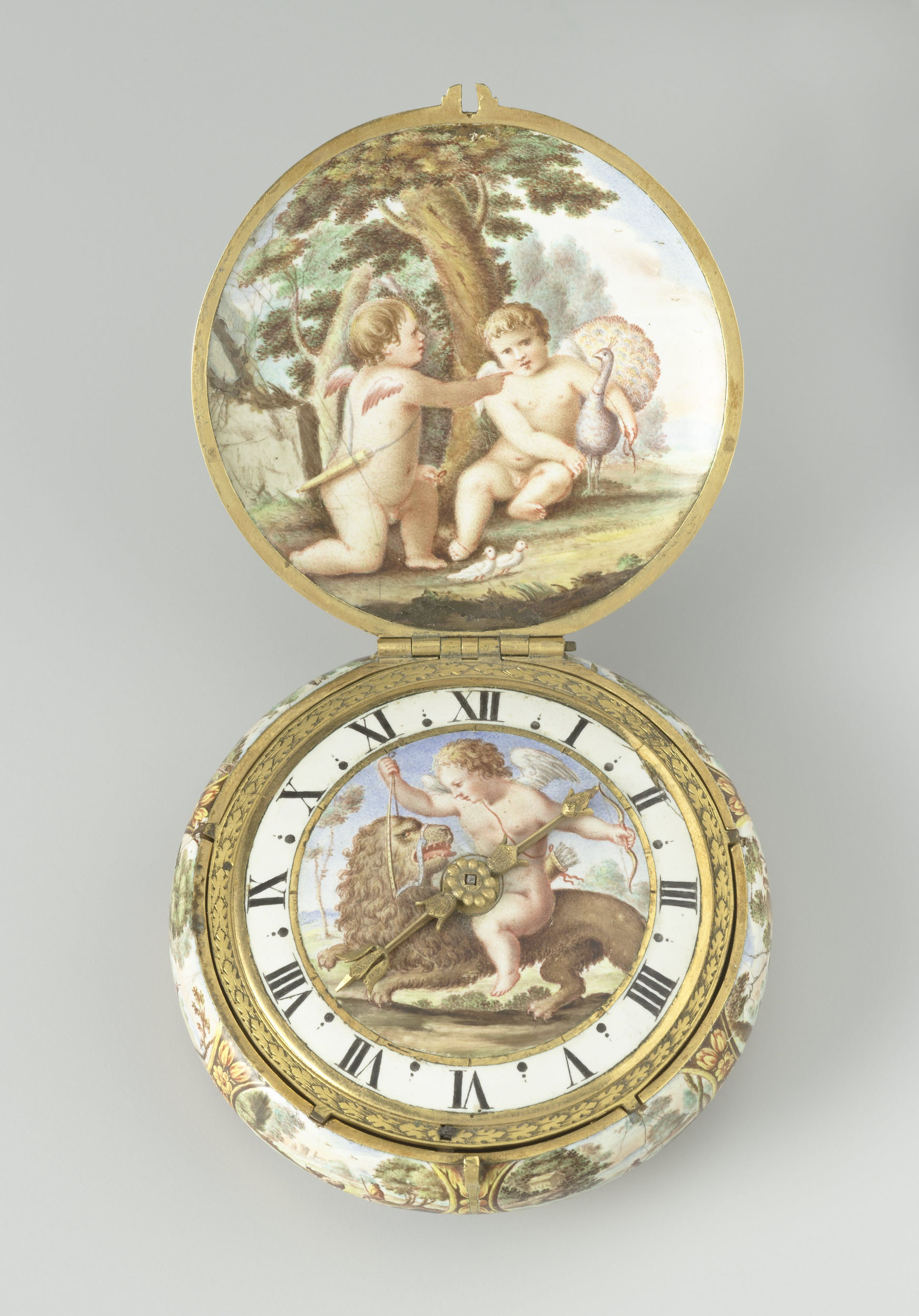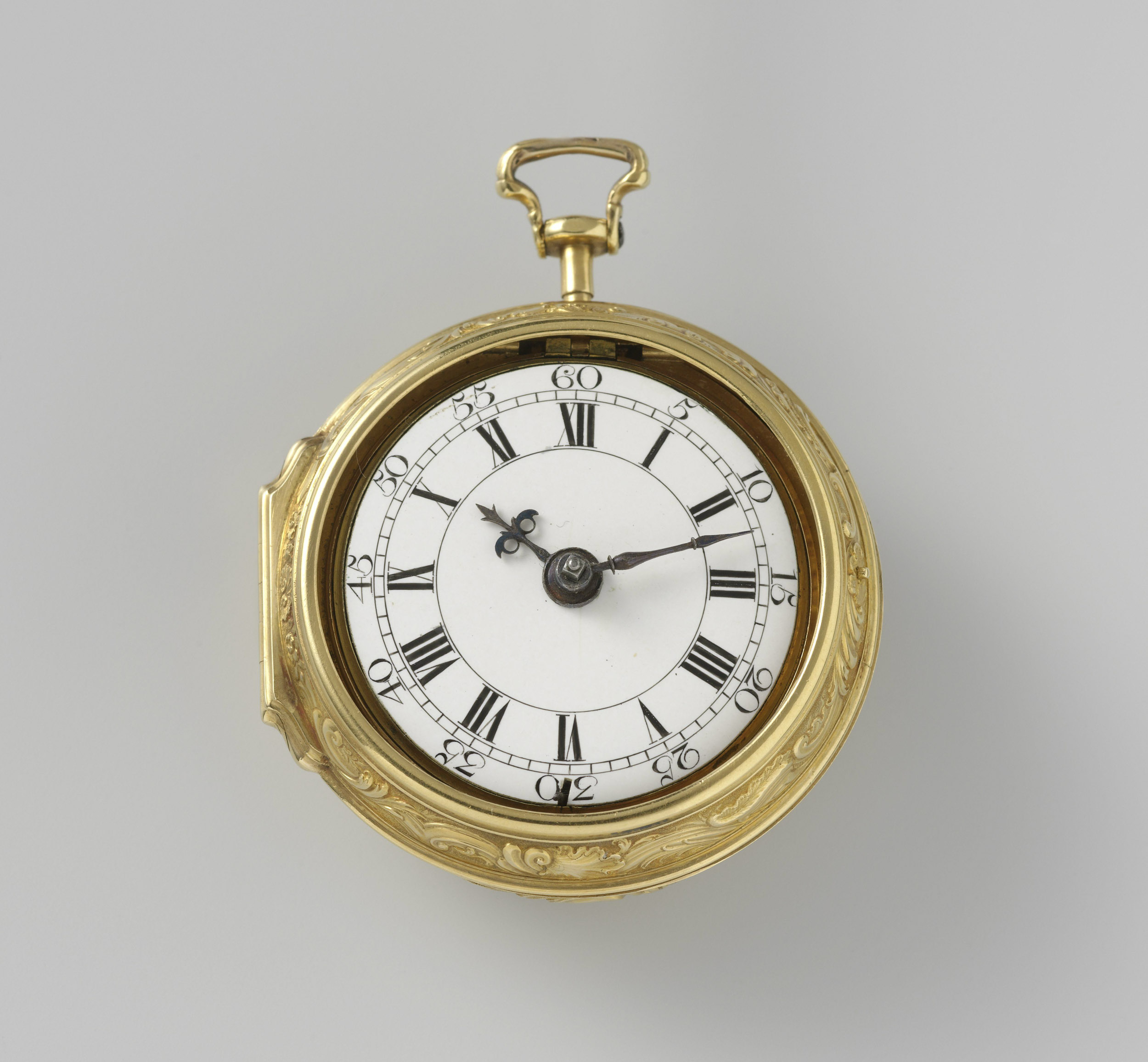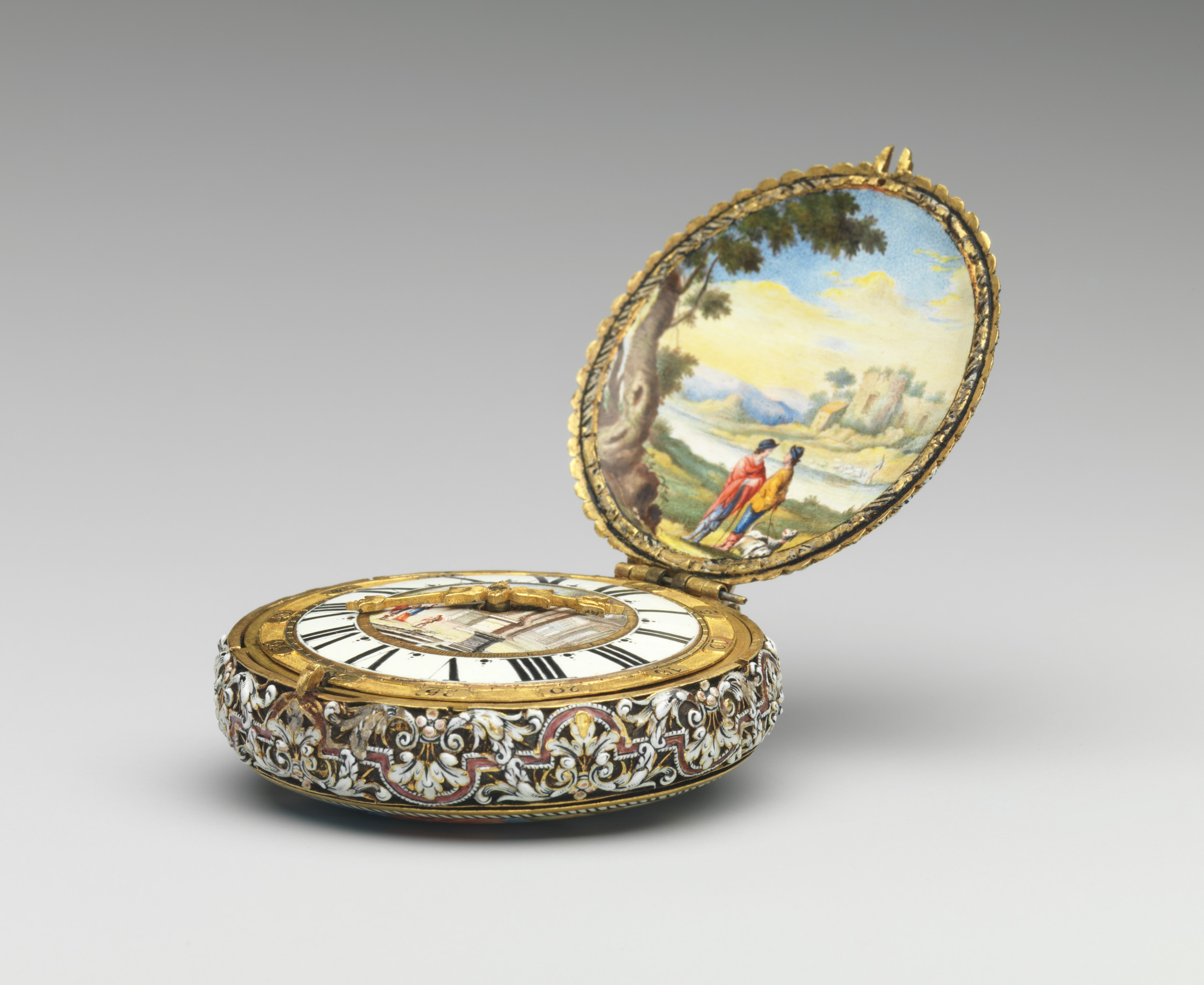Interviews • 04 Aug 2019
The Rijksmuseum on Horological Conservation
Talking Watches with Suzanne van Leeuwen, Junior Curator and Conservator of Jewellery at the Rijksmuseum.
There is nothing quite like a sunny day in Amsterdam, and nothing quite like spending a swelteringly hot summer’s day in Amsterdam comforted by the air-conditioner of the city’s premier gallery, the Rijksmuseum. Far from being a mere refuge from a 36-degree day (although that does not hurt), the Rijksmuseum has been a haven for those seeking the world’s best art and cultural artefacts for over 130 years.

Amongst the Rembrandts, Vermeers and Van Goghs, I was led by Junior Curator and Conservator of Jewellery at the Rijksmuseum, Suzanne van Leeuwen, down to the shady depths of the Rijksmuseum’s “Special Collections” area.
Housing tapestries, metalwork, jewellery and model ships, I felt as if I had just been led into a precious vault. Suzanne and I stopped in front of the horological section. Cracking the treasure chest wide open, we talked about the grandeur of the French Court, pocket watches as wedding gifts and why jewellery is more than just sparkling stones.
Thank you for meeting with me Suzanne. To kick things off, could you tell us a bit more about what your role as Junior Curator and Conservator of Jewellery at the Rijksmuseum involves?
I have a background in art history, classical archaeology, gemmology and the conservation of metal objects, in which I specialised in jewellery. In my job here at the Rijksmuseum, I am in the very fortunate position of being able to divide my time between more traditional art historical research on one side and material-technical research on the other side.

One or two days a week I work on the jewellery collection in our metal conservation studio using the technical facilities available here. Understanding a piece of jewellery or watch starts with the determination of the materials it was made from and how it was made. To start a conservation treatment, these questions need to be answered in order to understand what has happened to an object over time and how we can preserve it for future generations.
The remainder of the week I conduct research for the collection in different ways: studying literature and other collections, visiting archives in preparation for articles, collection catalogues, conferences and future presentations and exhibitions.

What does jewellery mean to you?
To me, jewellery is such an interesting art form because it is so close to us. What other art do you wear on your skin, so close to your body? Whether we are aware of it or not, the jewellery pieces we choose to put on at the start of the day are the symbols we are choosing to project to the rest of the world. I find what those choices are, and the emergence of trends in these choices over different times and places very interesting.

How has the Rijksmuseum’s horological collection changed over time?
Our horological collection has been gradually expanding ever since the Rijksmuseum opened in 1885. The basis of the collection is a small group of 17th and 18th-century pocket watches that were part of the collection of the last Stadtholder William V, Prince of Orange, as well as several other national collections that were brought together in the new Rijksmuseum.

In the first half of the 20th-century, the collection grew with several bequests from important collectors, expanding into the 16th and 19th-century as well. The focus of the collection are pocket watches; wristwatches have never been part of our collection policy. In the second half of the 20th-century we occasionally bought a pocket watch at auction and in the last few years, we have accepted several gifts to the museum. More and more important when accepting these gifts or buying at fairs and auctions are the personal stories or links with Dutch families, makers, collectors or specific historical events.

You mentioned that you have never included wristwatches as part of your collection policy. Why is this?
I think that in terms of what pieces are chosen and curated, there has been an ever-increasing emphasis on presenting items that tell a story and shed light on an important historical moment or are representative of a wider societal trend. This is as opposed to choosing objects that are merely a collection of personal items. As the Rijks has grown older and gained more of a name, we have increasingly focussed on acquiring historical pieces from certain time periods or of a certain significance. I think this distinction is particularly important for something like jewellery, which is inherently personal in nature.

What timepieces do you currently have on display here?
Spread throughout the museum we have several clocks on display, wound every Thursday morning. These clocks form part of several educational programmes for children in which the striking of the clocks plays an important role. Where we are sitting on the ground floor here is the so-called Special Collections. Here we have the possibility to show bigger collections of the same type, such as ship models, ceramics, glass, textiles but also jewellery and pocket watches. Currently we have about 100 pocket watches here on show, and it’s a semi-permanent exhibition, so in general, we do not change the display; pieces are chosen based on their provenance, makers, condition and quality.

Do you personally collect any watches?
I have one watch which is really precious to me – I’m wearing it now actually. It’s a Jaeger-LeCoultre, and it was bequeathed to me by the amazing Marjan Unger, with whom I was lucky enough to write a book called Jewellery Matters– released last year. To be given a watch by a woman whom I respect so much and who was such an influential art historian in the Netherlands is truly special. She really understood the personal aspect of jewellery – to have something personal of hers is, therefore, a great honour.
On the topic of why jewellery matters – what period of jewellery history do you personally find most interesting?
Gosh, that is an unfair question to ask considering I am responsible for a collection spanning from the late Medieval period to 2017! In all seriousness, I have a weak spot for jewellery from the second half of the 16th and the early 17th century. They often show a gorgeous balance between exquisite gold work, 3D enamelling or encrusted enamelling, baroque pearls and colourful gemstones. Combined with religion, symbolism, humour and fantasy, this makes them really interesting to both study and restore.

If there was (heaven forbid) a fire in the Rijksmuseum and you could save but one item, what would it be?
That is a tough question, but I think it would be a superb large watch made for the marriage of Prince William of Orange to Mary Stuart in 1641. This watch is so important because it represents the coming together of the Dutch and English crowns. It was ordered from Paris – its place of production is actually clearly stated on the fusée movement, which has a verge escapement with balance wheel.
It is signed by Antoine Masurier, a maker recorded in Paris between 1637 and 1649. However, the artist central to this piece’s beauty was the famous Henry Toutin, who decorated both the case’s interior and exterior. It is quite rare for a watch to display its creator’s name at all during this period; showing both names not only demonstrates the significance of this piece, but also the recognition and status that came with Toutin’s name. On the dial, a woman and a man are being presented with flowers – this depicts the young couple, whose marriage in a Gothic church is shown on the inside of the cover.

On the watch’s posterior side, the couple are depicted being carried across the sea by Neptune. Cherubs are gifting the pair flowers, and on the shore five women await their arrival with the arms of the provinces of Holland, Zeeland, Utrecht and Guelders. This Classically inspired scene symbolises the young William bringing his bride from English to Dutch shores.
Is this watch’s artistry of an especially high calibre when compared to other fine examples of the time?
What makes this watch so special is not only its historical importance but also the artist’s name attached to it: Henry Toutin. It is not known who ordered the watch, but it was conceivably a gift from Mary’s father, Charles I. Henry Toutin’s talents were certainly admired at the court of Charles I, but Toutin also worked for the Dutch court for a period in The Hague, making it possible that the Stadtholder commissioned the watch.

The beauty of Toutin’s enamelling and the intricacy of the watch’s movement, construction and materials make it a fine exemplar of French watchmaking at the time. Considering this, as well as the watch’s role as a symbol of Dutch and English unification, this watch is decidedly unique.
What role do you think watches play in the jewellery family?
“Watches not only have that personal, bodily connection that makes jewellery interesting as a whole – they also measure time. Who owned the means of telling the time, how they displayed this privilege, and the way in which their device linked art, metalwork, science and politics is uniquely fascinating. They are pretty special objects.











